I have a series of spectral data which I want to plot in a waterfall style plot. waterfall itsself is no that usefull, because the thin lines have too many differences in each spectrum, that is is not very usefull
I therefore want to try the ribbon function, which looks promising in the docs .
But the result is completely different and useless!
figure(2); clf;
ribbon(spectralSeries);
shading flat % otherwise complete dark
axis tight

EDIT:
I created now a manual waterfall plot, which is close to what I wanted:
hold on;
stepsize = 0.35;
for k = length(series):-1:1
color = cmap(k,:);
data = spectralSeries(k,:) + (k-1)*stepsize;
hplot(k) = filledcurve(xaxis, data, 0);
set(hplot(k), 'FaceColor' , color*1.2)
set(hplot(k), 'EdgeColor' , color*0.5)
end
hold off;
axis tight

Nevertheless I am still interested in a solution of the original problem.
EDIT 2:
Here an example using the same data with waterfall, ribbon and my custom code. Only my code is usefull to visualise the data. I would still like to know how to make ribbon and waterfall look like a decent plot...
This code is now used to create some data
xaxis = linspace(-pi/2,3/2*pi, 1000);
variation = [ 0.5 1 5 10];
spectralSeries = abs(sin(xaxis)'*ones(1,4) + sin(xaxis'*variation)*0.25);
Here a result using ribbon
ribbon(spectralSeries);
shading flat % otherwise complete dark
axis tight

And here with waterfall
hplot = waterfall(spectralSeries);
set( hplot, 'LineWidth', 4 );
hidden off;

and for comparison a plot using my own written code, which is similar to a waterfall, but without the depth axis. However it is the only one which looks decent and displays the data curves such that the variations between each curve can be seen.

